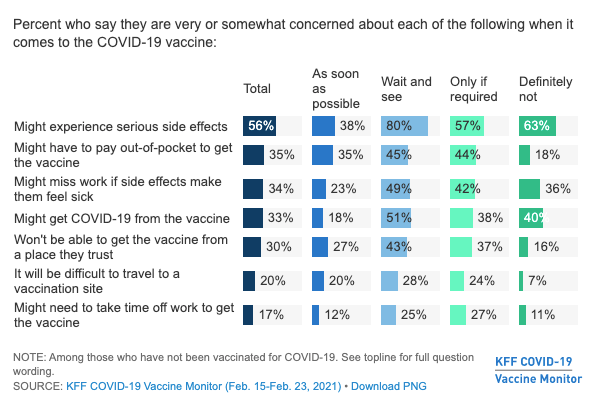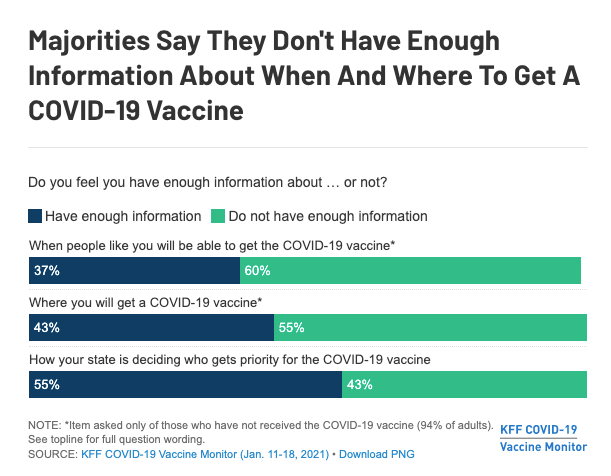Chart Package: Erosion of COVID-19 Vaccine Hesitancy Seen
Twenty-six percent of people who are taking a wait-and-see approach about whether to get the COVID-19 vaccine say that they’d be more likely to get vaccinated if it involved just a single dose.
As a panel of experts for the US Food and Drug Administration today reviews the data from clinical trials of Janssen’s single-dose vaccine for coronavirus disease 2019 (COVID-19), they may want to also consider how approval of a single-dose vaccine might play with the public. According to a report by the KFF COVID-19 Vaccine Monitor, a single-dose vaccine would nudge some Americans who are now hesitant about getting vaccinated toward getting the shot.
The report also finds that there’s more acceptance to getting the COVID-19 vaccine in general: 55% of Americans have either gotten their first shot of a vaccine or say that they want to get vaccinated as soon as possible. That’s an increase from the 47% who said the same thing in mid-January and the 34% who said the same thing in December.
However, 22% of respondents say that they will definitely not get vaccinated unless they have to in order to keep their jobs, or stay in school, or participate in other activities that they want to participate in but that require vaccination.
But even here, there may be an opportunity for overcoming vaccine hesitancy. The report says that 26% of those in the wait-and-see group say that they would be more likely to get the vaccine if it’s just one dose.
Source: KFF COVID-19 Vaccine Monitor

The survey of 1874 persons, conducted from February 15 to 23, includes oversamples of about 500 Blacks and 500 Hispanics. Thirty-four percent of Blacks and 26% of Hispanics who are 18 to 29 years old say that they will wait and see how the vaccine works for everybody else before they get it. Eighteen percent of White adults in the that age group say that they will wait and see.

Source: KFF COVID-19 Vaccine Monitor

Fear of side effects continues to be the main reason for vaccine hesitancy with 56% of those who “have not yet been vaccinated, including 80% of those in the ‘wait and see’ group, say they are ‘very concerned’ or ‘somewhat concerned’ that they might experience serious side effects from the vaccine,” the survey states.
Source: KFF COVID-19 Vaccine Monitor

Any American who wants the vaccine can get the vaccine at no cost, but apparently not everyone has gotten the news. About half of those in the wait-and-see group worry that they may have to pay for it. Also a factor in that group: fear that the side effects might make them miss work and concern that the vaccine might actually give them COVID-19.
As has been much noted and commented on, wanting the vaccine and getting the vaccine are two different things. “Most U.S. adults who have not yet gotten vaccinated (94% of all adults) say they do not have enough information about when and where to get a COVID-19 vaccine once they are eligible,” the report states. “This includes six in ten Black and Hispanic adults who say they don’t have enough information about where to get the vaccine.”
Source: KFF COVID-19 Vaccine Monitor

Bridging the Gap: Operating Room and Central Processing Unite to Improve Surgical Efficiency
April 8th 2025Communication breakdowns between the operating room and central processing led to delays and frustration—until collaboration, cross-training, and shared goals turned metrics around and strengthened teamwork.